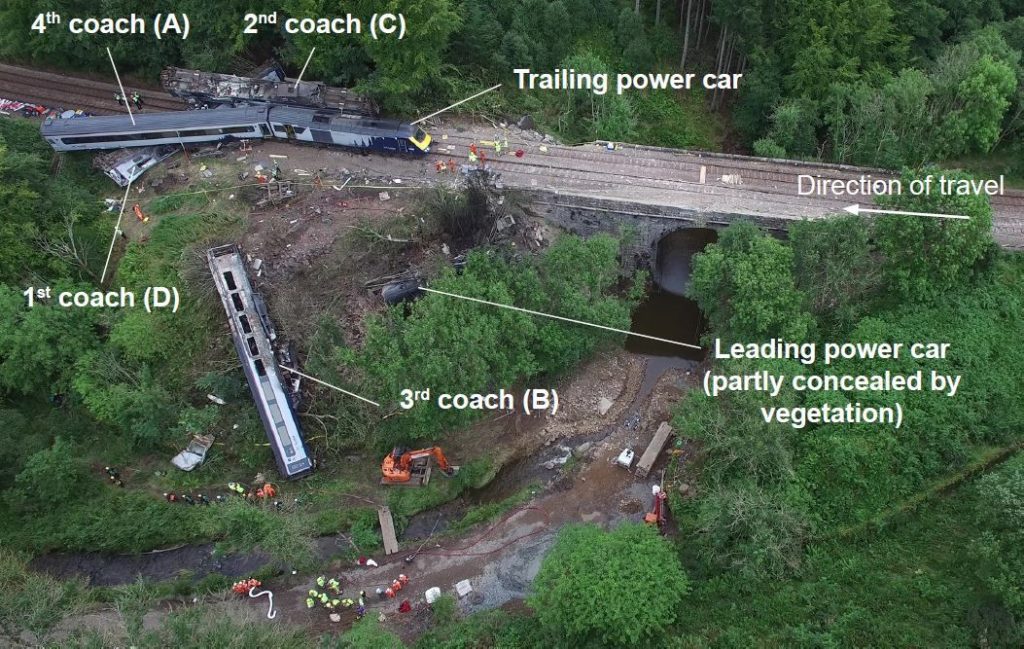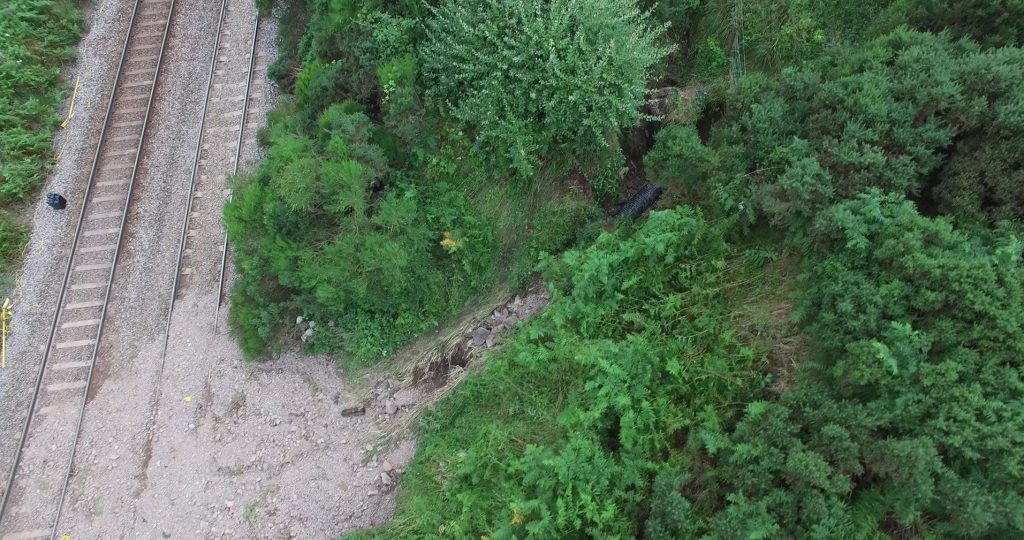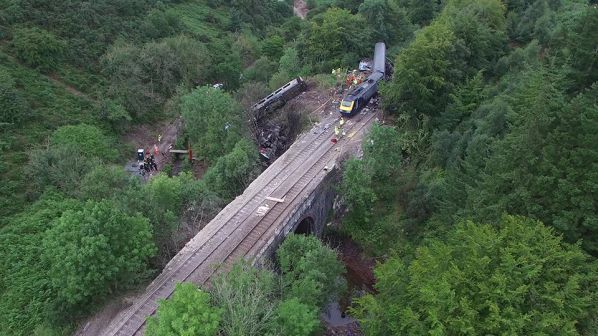BRITAIN’S Rail Accident Investigation Branch (RAIB) has released its interim report into the fatal derailment at Carmont on the Aberdeen - Dundee main line on August 12 2020, with gravel washing from an adjacent drain onto the line identified as the cause of the incident.
The ScotRail-operated InterCity 7 HST comprising four Mark 3 coaches and two power cars, designated as 1T08, was carrying six passengers and two conductors as well as the driver when the accident occurred. The driver, on duty conductor and a passenger were killed in the crash, while the other occupants were taken to hospital.
The interim report found that the train derailed after colliding with stones washed out onto the track from a gravel-filled crest drain and from the adjacent ground.

Infrastructure manager Network Rail (NR) instructed Carillion Construction to undertake improvement works on the cutting in 2009 due to instability in the cutting where the accident occurred. Carillion Construction, which entered liquidation in January 2018, contracted Ove Arup and Partners Scotland to design the works, which included securing slopes on both sides of the railway with rockfall netting and installing a new drain along the top of the cutting.
The new crest drain comprised a 450mm-diameter perforated pipe buried in a gravel-filled trench, an arrangement often known as a “French drain.”
The washout that caused the train to derail was caused by unusually heavy rain, which washed stone from the gravel-filled crest drain, and from surrounding ground, onto the track. RAIB says that although surface water flow alone could have dislodged the gravel, it is continuing to investigate whether other factors, such as the drainage system’s design or the quality of installation, contributed to the displacement of material.

Post-accident surveys of the track found no evidence suggesting the derailment occurred on the approach to the debris on the track, and verified that pre-accident inspections found no track defects in this area. RAIB has not found any evidence of a train fault that could have played a part in the derailment.
The accident
At the time of the accident, route control staff were aware of two landslips and two flooding events on the 34km section of line between Laurencekirk and Newtonhill, to the north and south of Carmont.
Train 1T08 was stopped after passing Carmont signal box following reports from earlier services of a landslide further south. In order to allow passengers to disembark, the train was rerouted back to Stonehaven, which required it to switch from the southbound line to the northbound line at Carmont.
At 09.29, the driver was authorised to travel back to Stonehaven, and was told the line was clear to travel at the permitted line speed of 121km/h.
Data from the on-train data recorder (OTDR) fitted to the trailing power car shows that the train was travelling at about 117km/h when it approached the washout debris near bridge 325. The left-hand curve on the approach obstructed the driver’s view of the debris until the train was about 120m away, giving the driver less than four seconds to apply the emergency brake.
When the leading power car struck the debris, it derailed to the left, deviating off the line for about 60m until it struck a section of bridge parapet, destroying more than half of it. The power car then fell off the bridge and down onto a wooded embankment below, with the driver’s cab becoming detached on impact with the ground.
The first coach came to rest on its roof, almost at a right angle to the track, while the second coach came to rest overturned on its roof with its trailing end on top of the first coach and facing the direction of travel. The third coach ran down the steep embankment to the left side of the railway and came to rest on its right-hand side. The fourth passenger coach remained upright and came to rest with its leading end on top of the first coach, while the trailing power car remained upright on the line, still coupled to the rear of the fourth coach.
Contractors working under the bridge at the time described hearing a “loud rumbling noise from above” before running as the derailed vehicles fell down the embankment. The contractors provided support for the occupants of the train and called emergency services, who arrived around 10.13.
The line was closed while the RAIB investigations were carried out and the line repaired, before reopening on November 3 2020.

